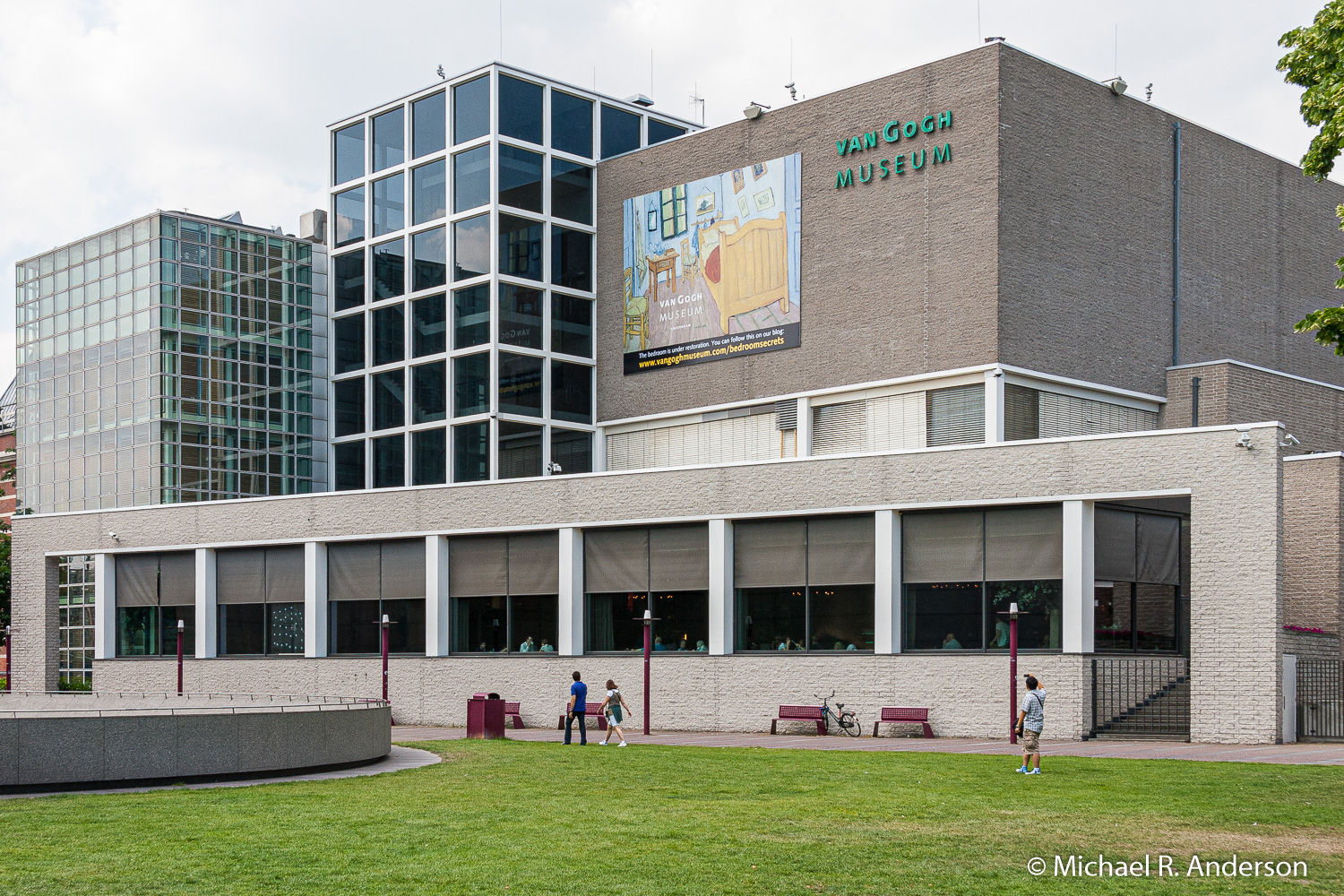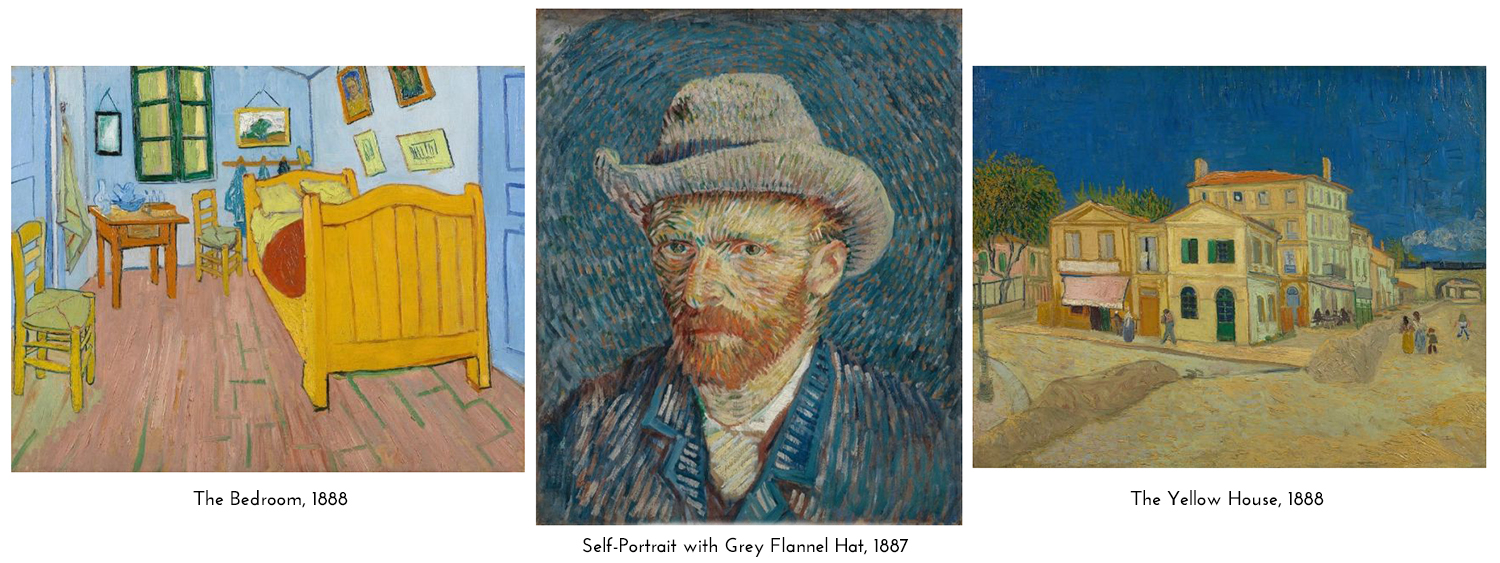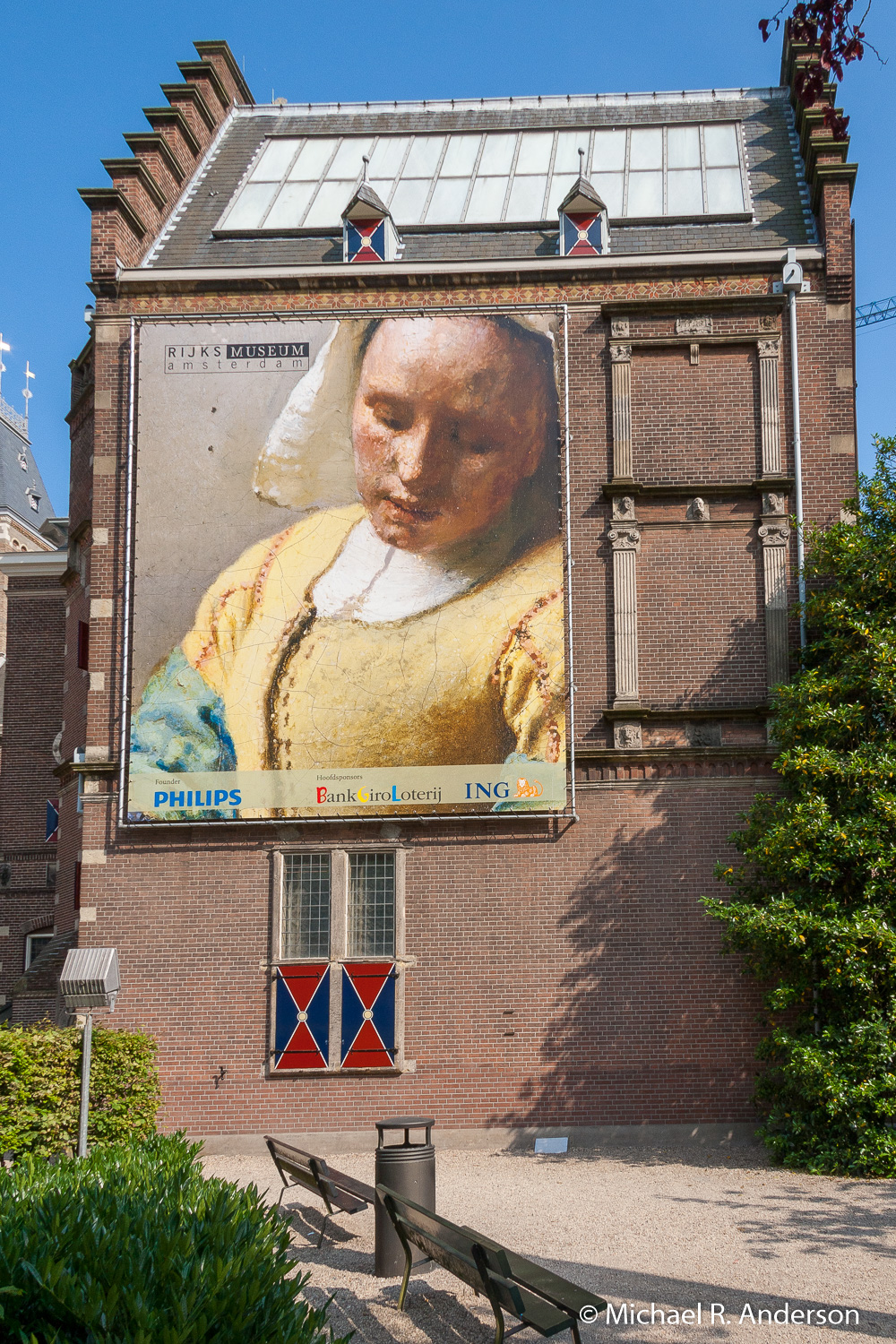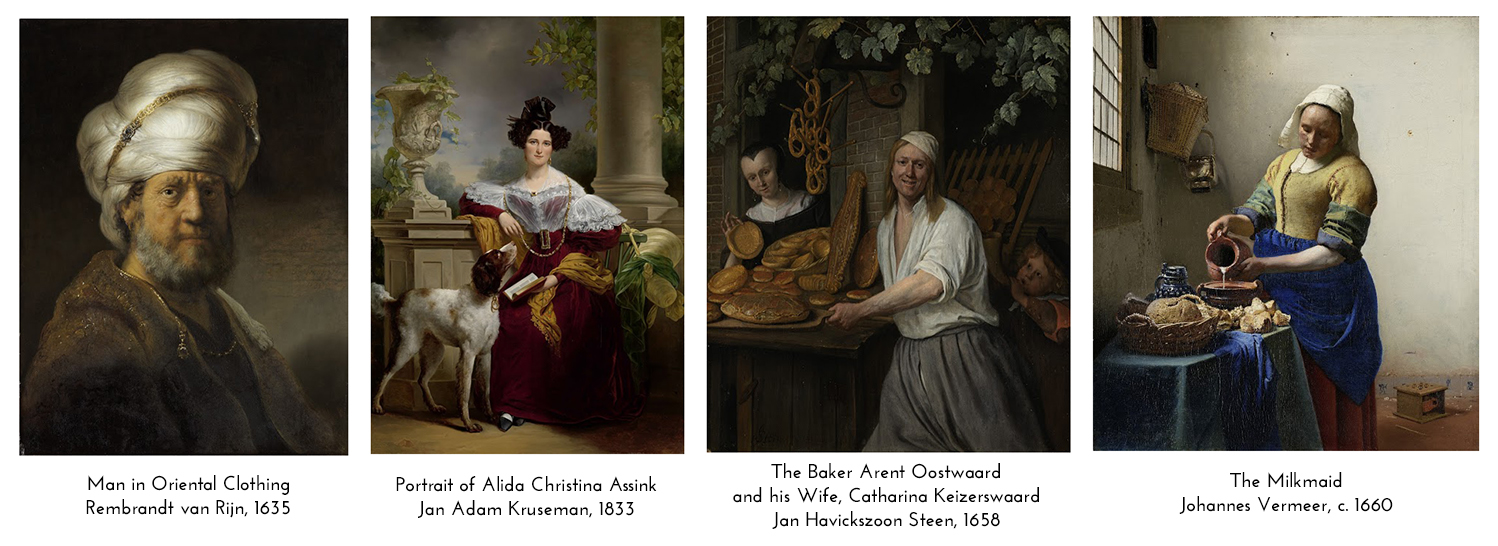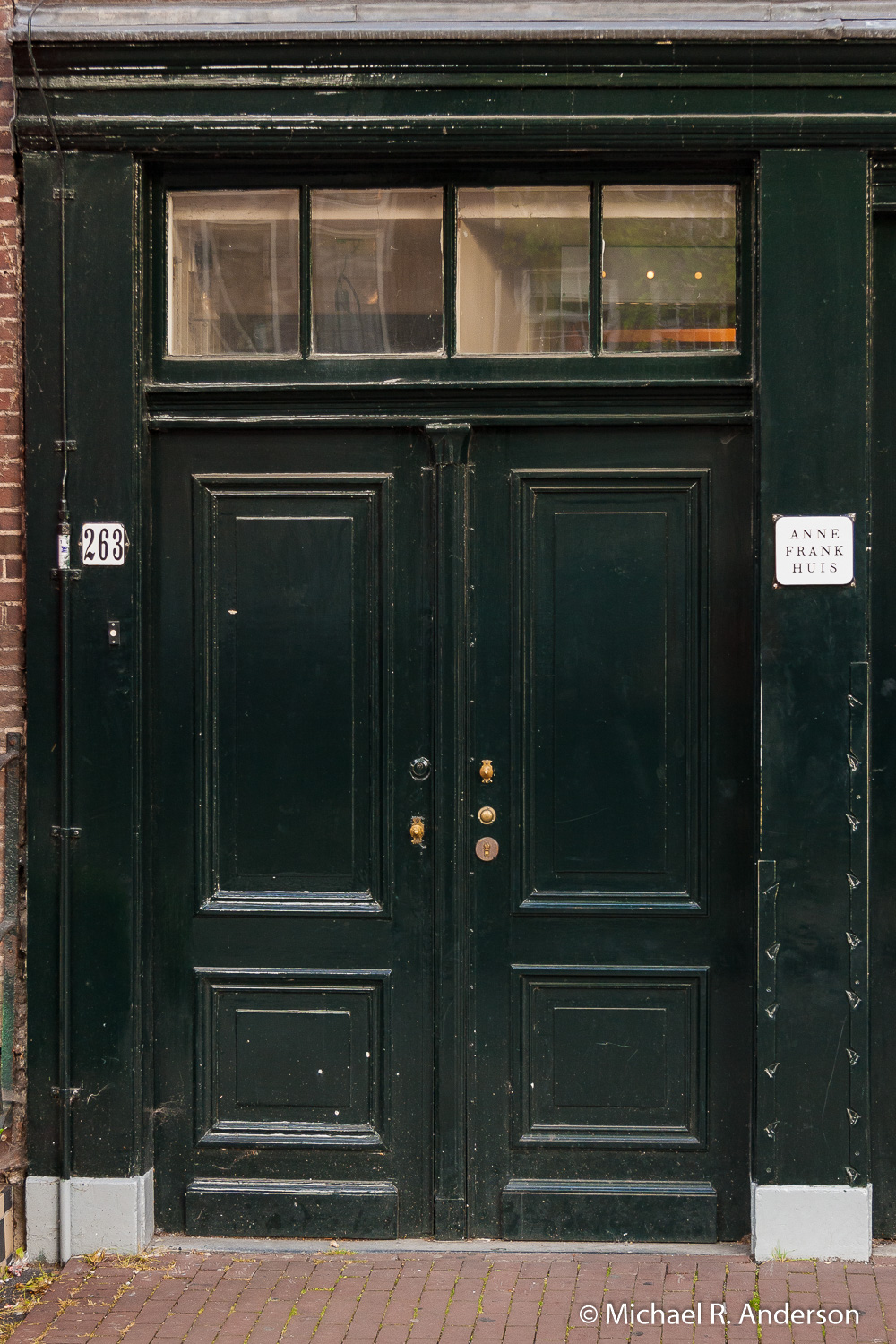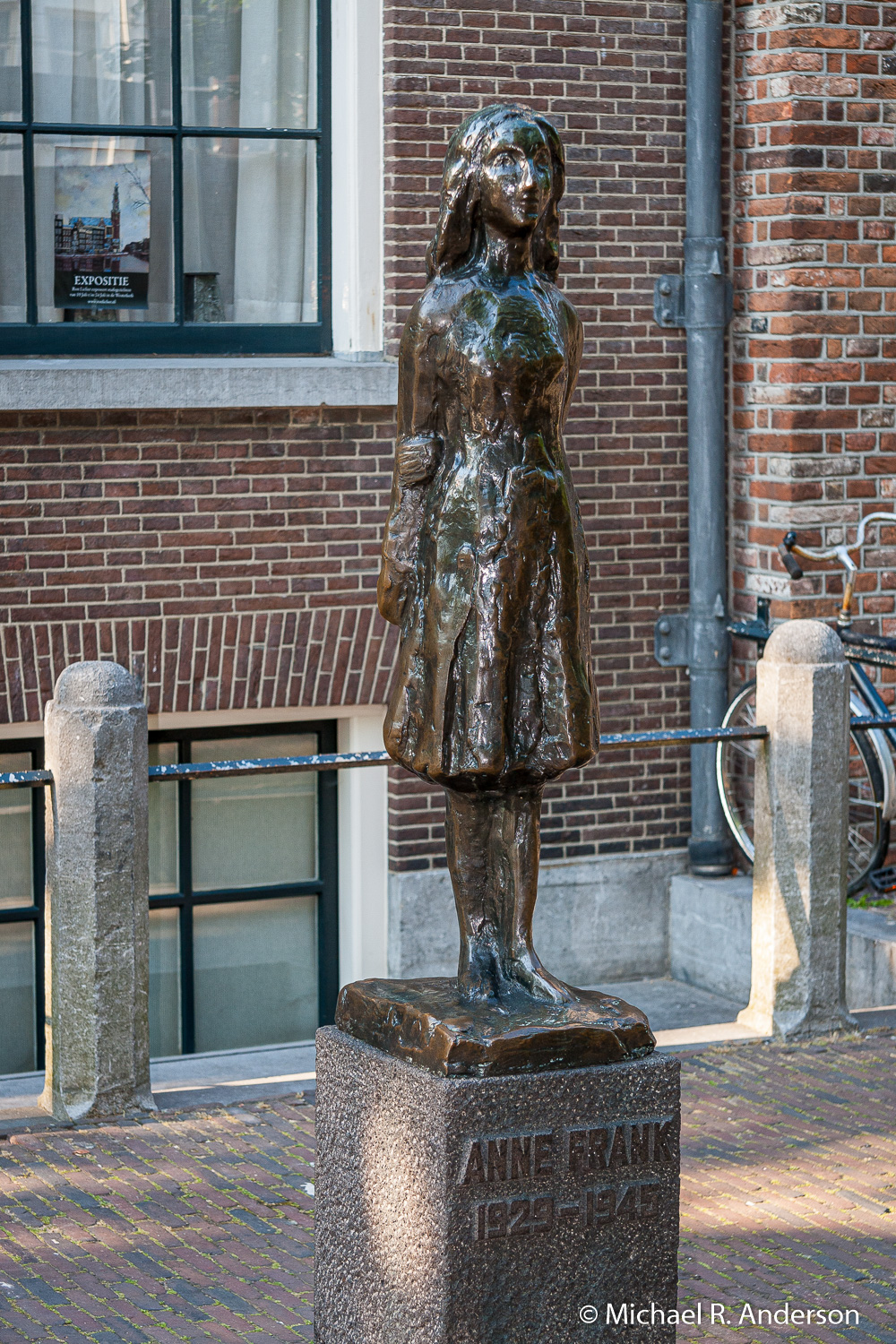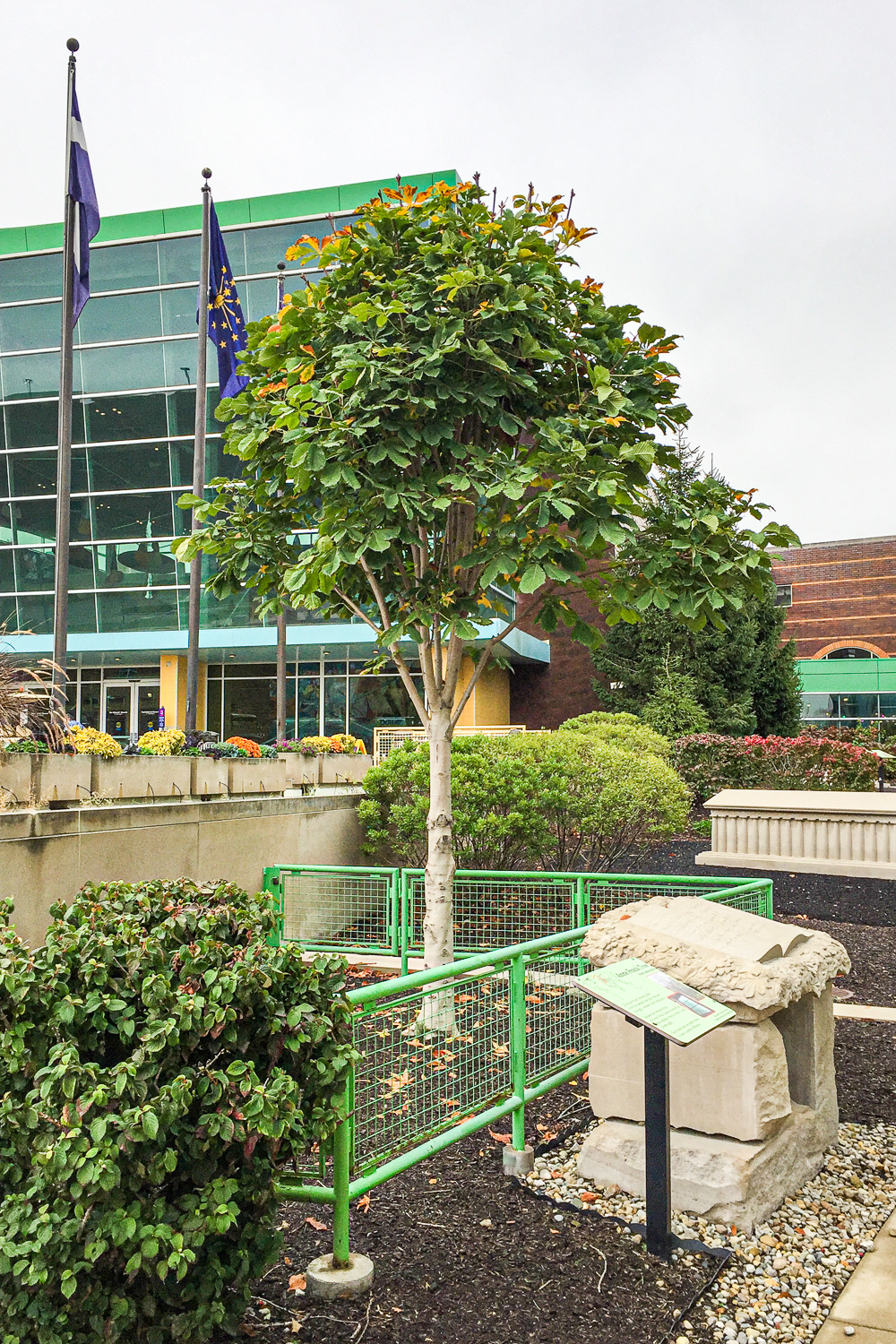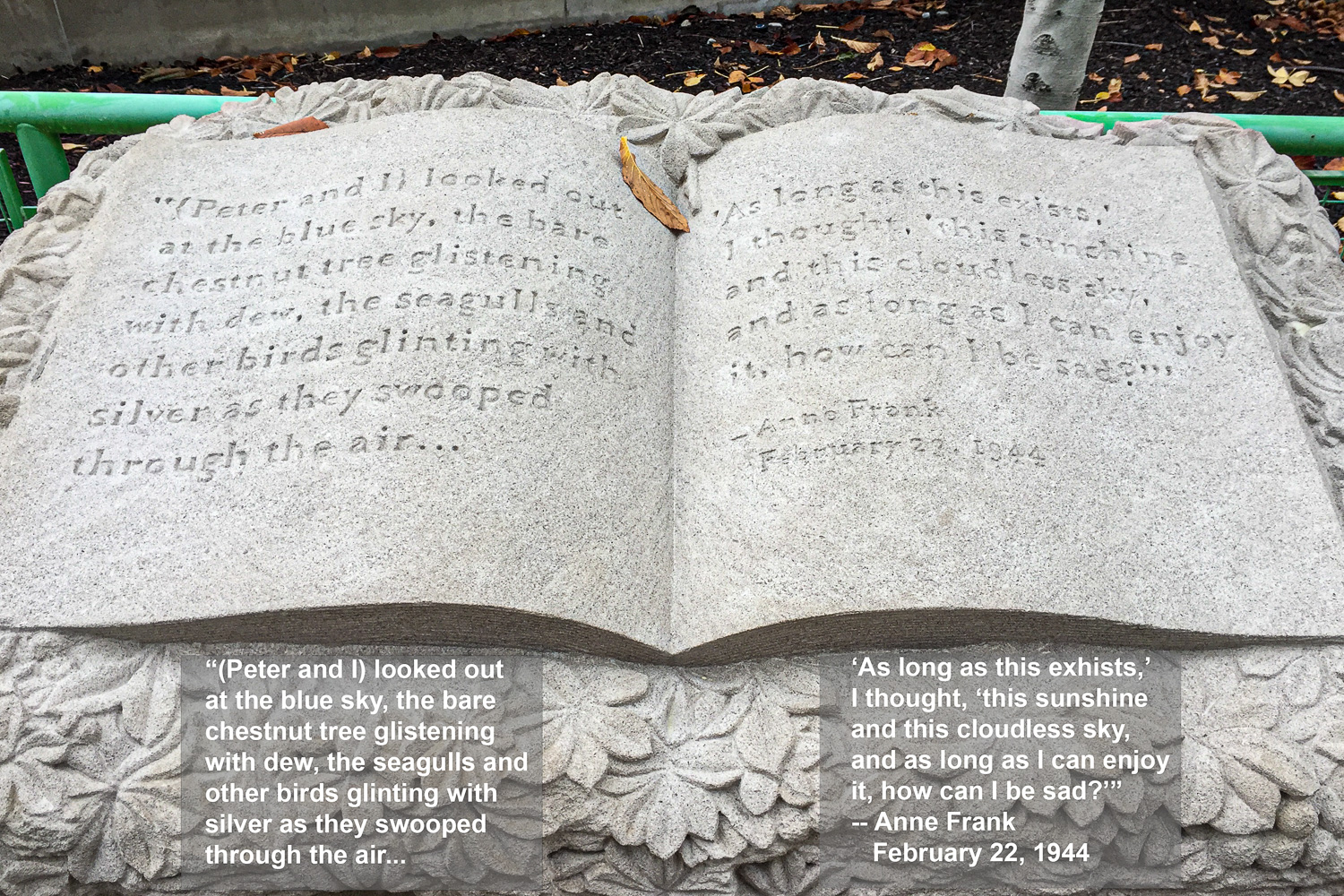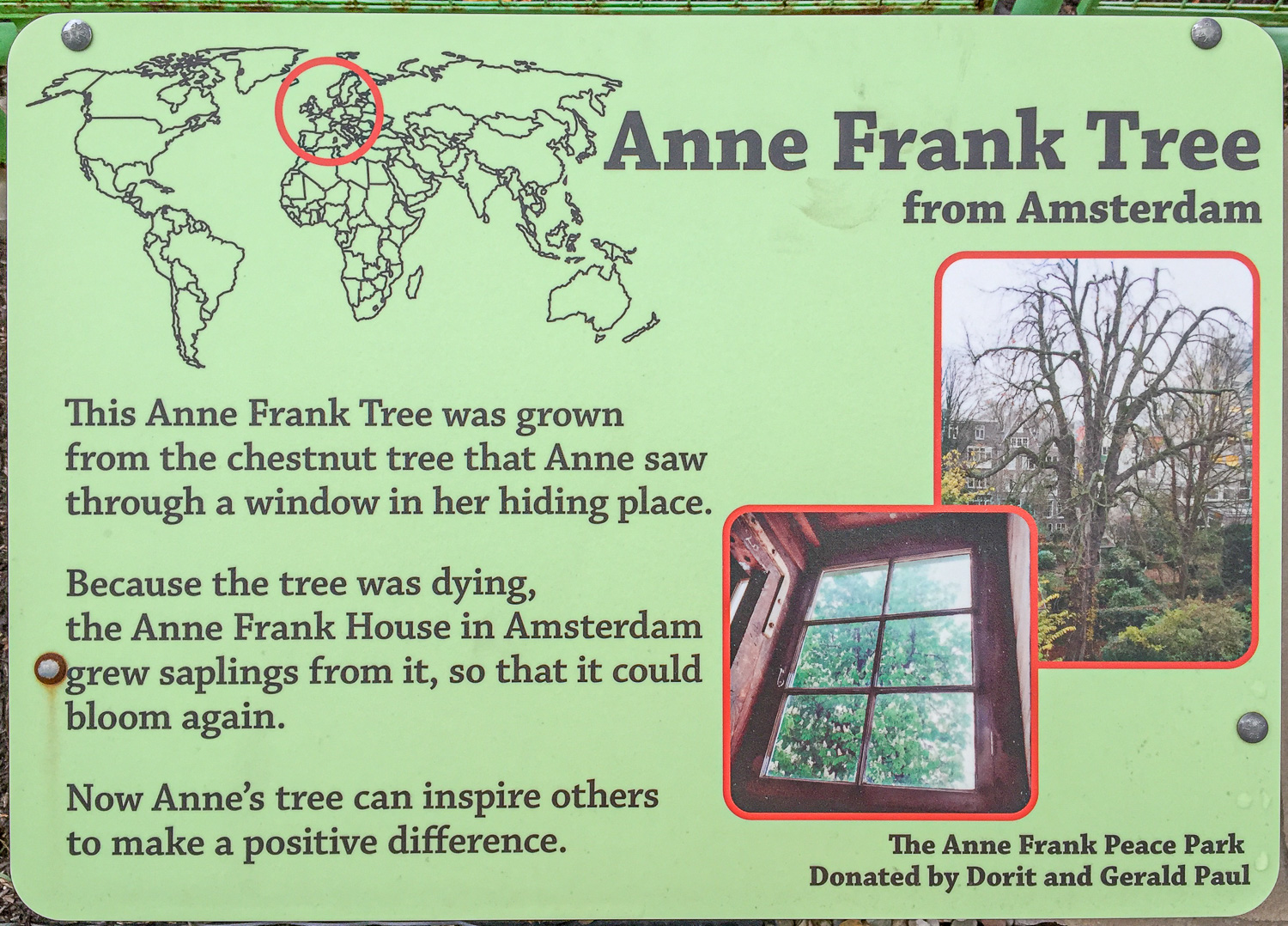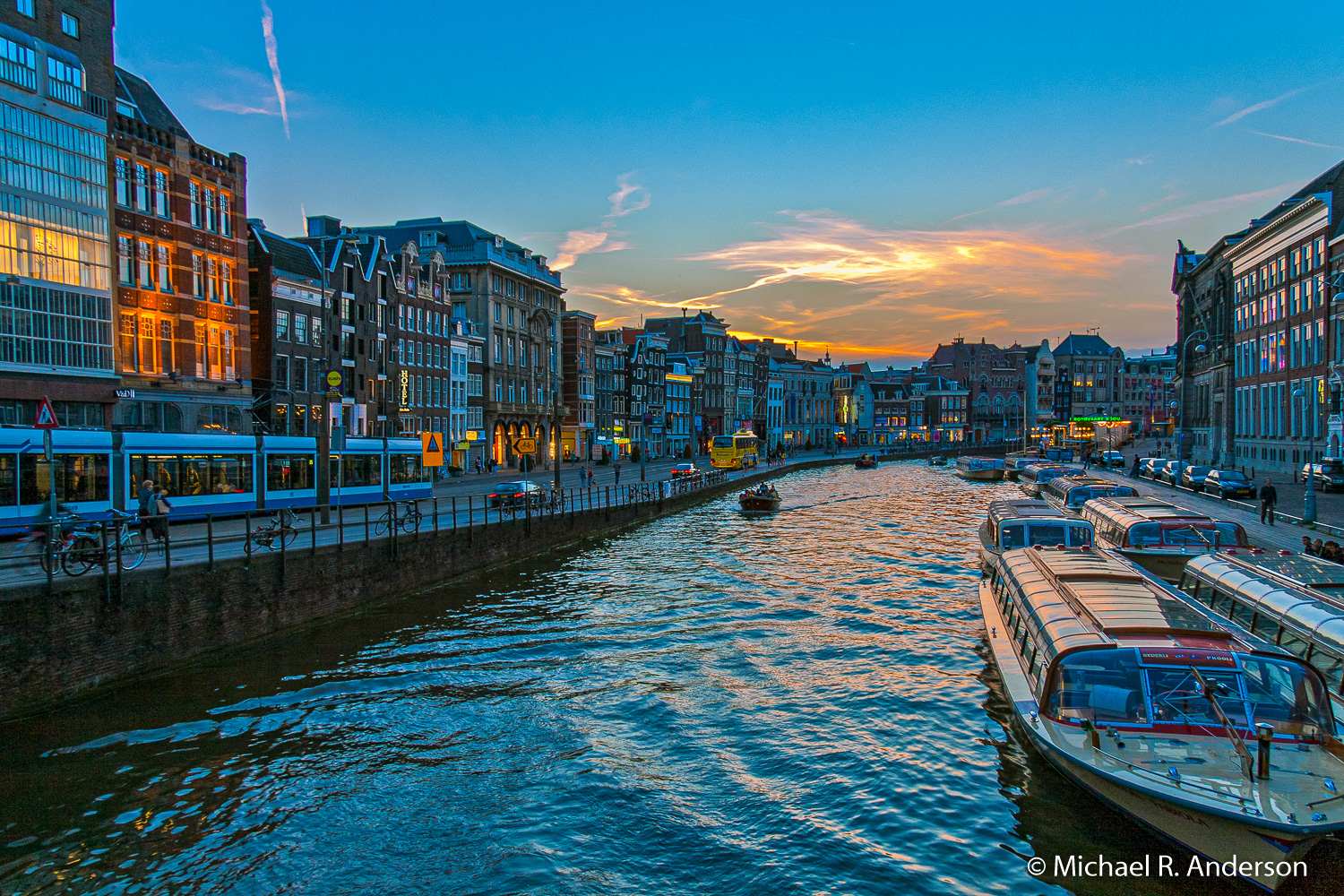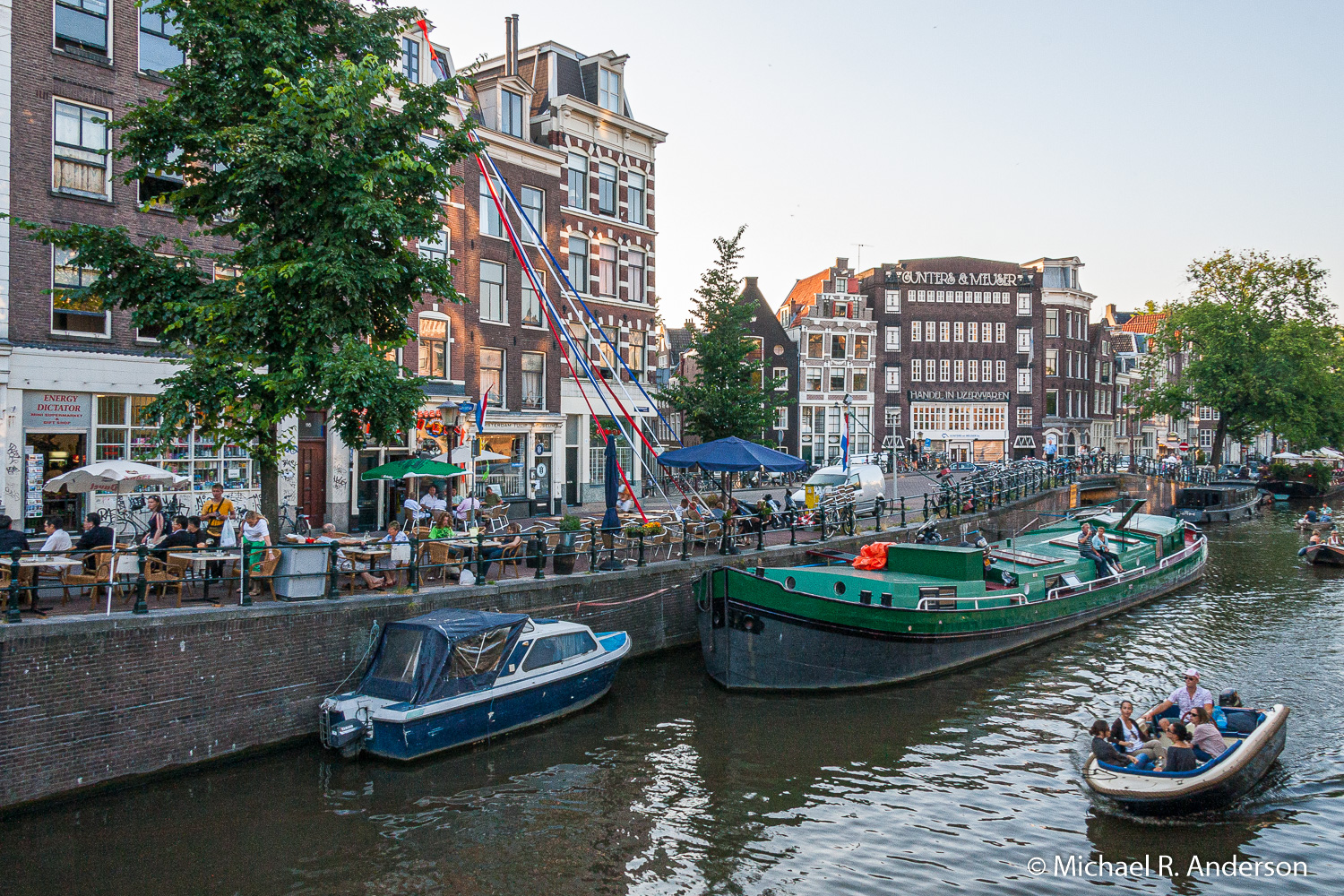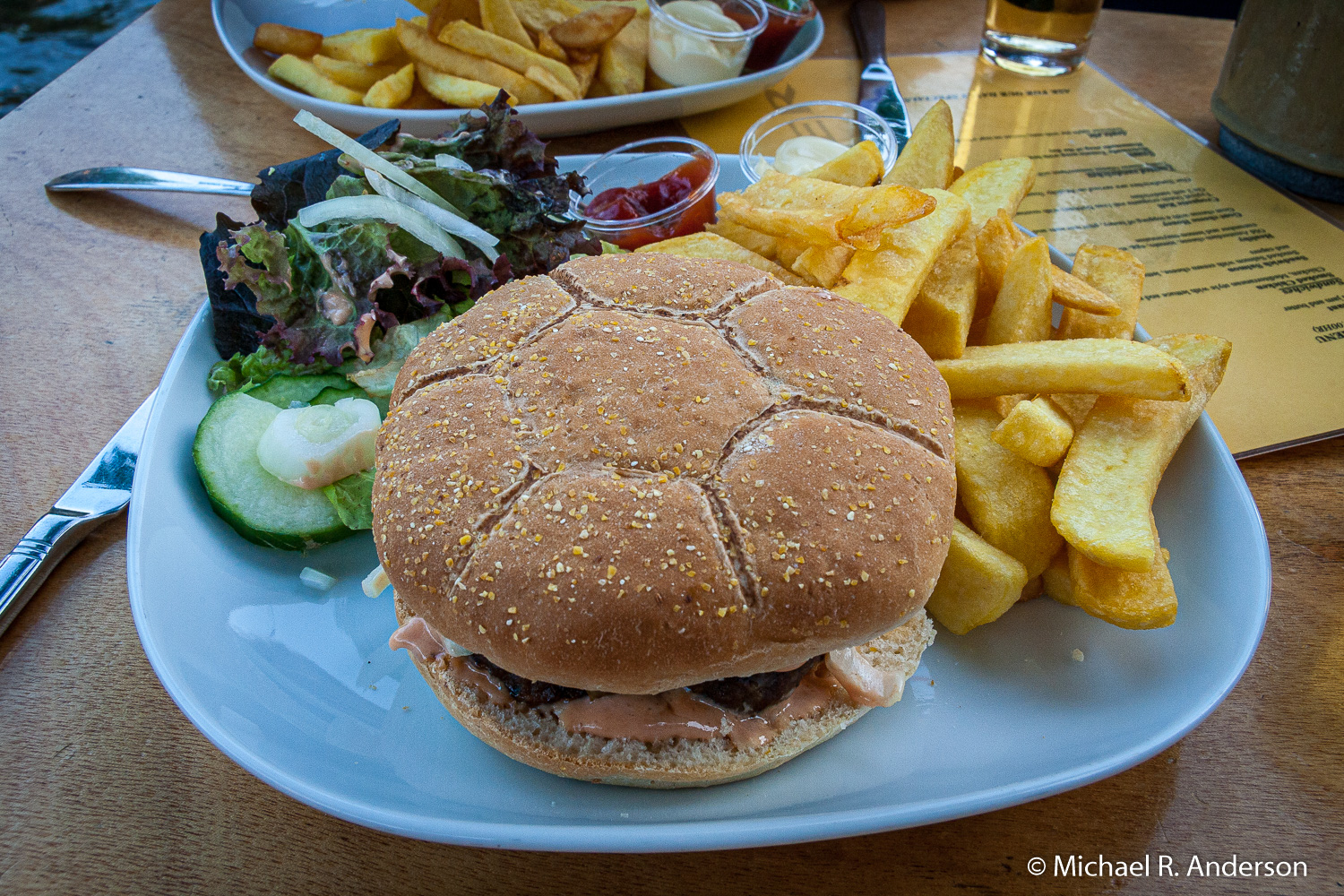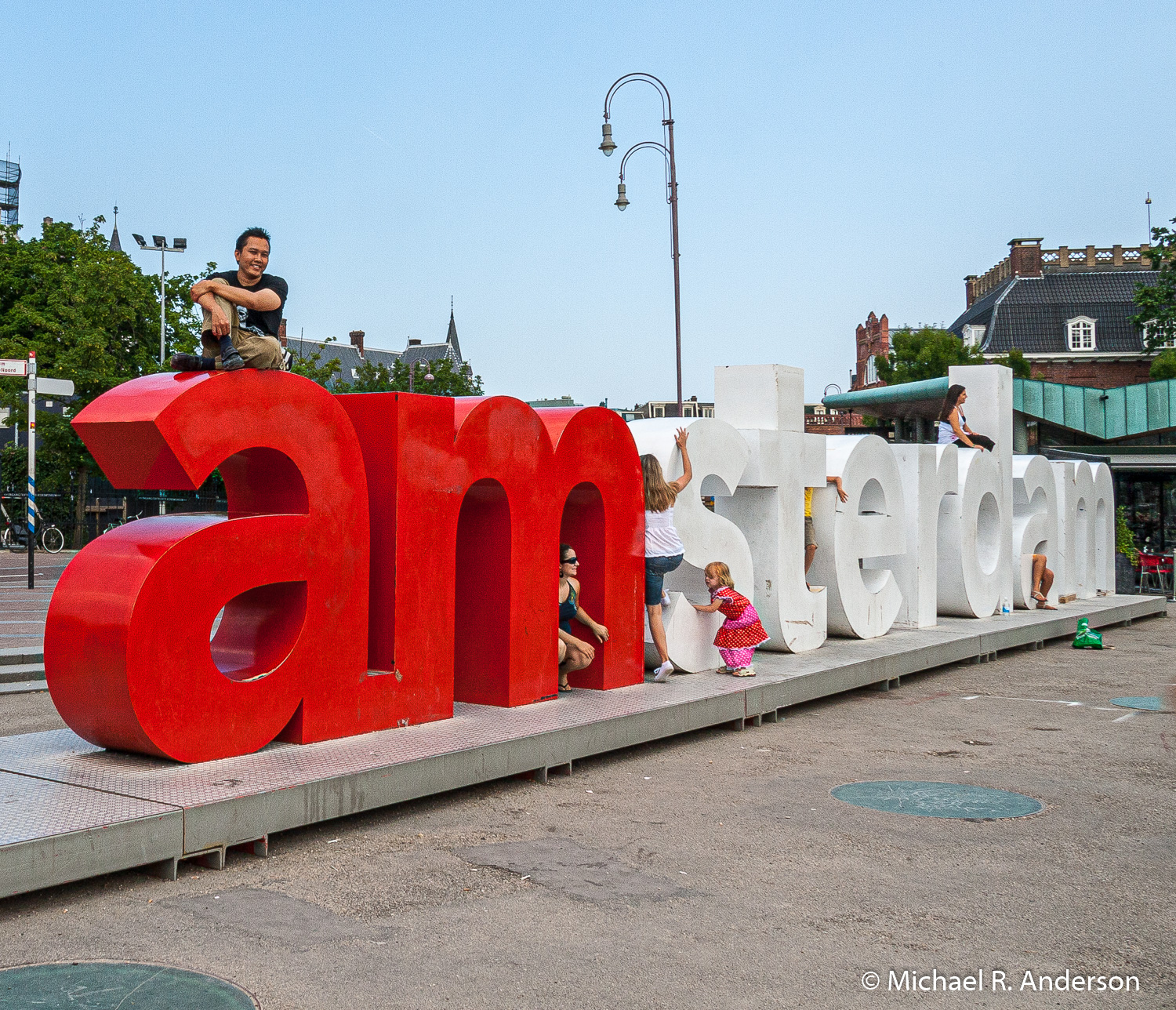
The day started with a great breakfast — cereal, fruit, yogurt, cheese, bread, pastries, coffee, tea, orange juice and, they made me an omelet on request — served in a nice backyard patio. As with most European establishments, the breakfast was included with the price of the room.
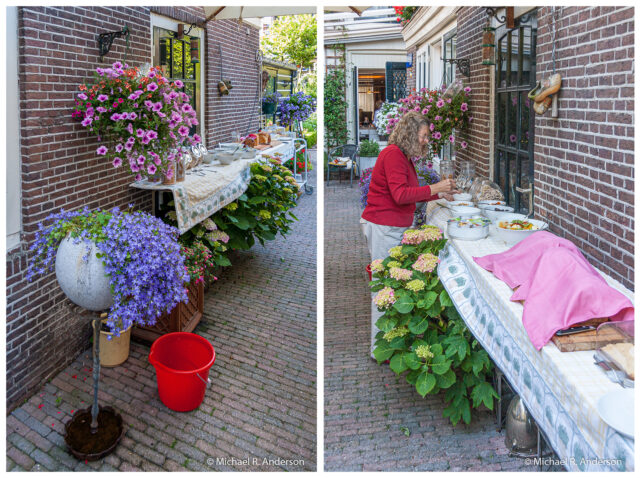
Having spent the previous day wandering past canals and watching out for bicycles, we decided we would walk around the city a little more and find some culture. The first place we visited was the Van Gogh Museum. It turns out that the Dutch do not pronounce this artist’s name “van go” as we Americans do. I can’t spell how they say it, but here is a very short audio clip of their pronunciation.
Taking photographs in the museum was forbidden, so all I have is a picture of the building. For your enjoyment and cultural benefit, however, I’ve added a few images of Picasso paintings that I downloaded from the museum website.
Our next stop was the Rijksmuseum, also known as the Museum of the Netherlands. It was undergoing a major renovation so we had to enter through the back. This museum is home to about 6000 paintings by scores of famous artists. The most famous artist, to me anyway, was Rembrandt. But, the only art appreciation class I ever had was when I was in high school, so my knowledge of art is a tad limited.
I did discover a couple interesting things about Rembrandt. One was that Rembrandt was his first name, van Rijn was his last name. Also, some of his paintings are surprisingly large, like 12′ x 14′ (yes, feet), and cover entire walls. Photography was allowed here, but my camera gear was stowed and I didn’t see others taking photos so I just used my eyes. As with Picasso, I have a photo of the building — near the back entrance — and some selected images from the museum website for you to peruse.
After leaving the museums we continued to walk around the city. When it comes to narrow buildings squeezed together with zero separation, San Francisco has nothing on Amsterdam. Many of the buildings are crooked since most were constructed on posts that were sunk into the mud for support. Many also have beams sticking out from the top floor with hooks hanging from them that are used for hauling bulky items to the upper floors. I was also fascinated by the art that frequently adorned the buildings.
It was interesting to note that some businesses were decked out in orange, Netherlands’ favorite color. The World Cup was in progress and fans were fired up. Televisions were outside every sidewalk cafe to ensure that fans could sit, have a few beers, and watch the ongoing matches.
The next place we stopped was one that was difficult to visit. It was located at Prinsengracht 263, the Anne Frank House. This is where Anne Frank and her family hid in a secret annex for more than 2 years during WWII — July 6, 1942 to August 4, 1944 — and where she wrote her diary. Photos were not allowed inside, but I’m not sure I would have been able to take any. Rooms were small, visitors were silent and the sadness was overwhelming.
A large horse-chestnut tree grew in the yard behind the house. Anne Frank mentioned this tree several times in her diary. A view of the tree through one window was her only connection to the outside world. Unfortunately, that tree blew down about ten years ago. Saplings from the tree, however, have been planted around the world. Eleven of them were planted in the United States, including one at The Children’s Museum of Indianapolis, where our son Matthew works. He took the three photos below of the tree, sculpture and sign at the museum.
After touring the city of Amsterdam, we decided it was time to see some of the countryside. Just like Amsterdam brings to mind canals, rural Netherlands brings to mind windmills. The hotel owner suggested we take a train to Koog Zaandyk and visit Zaanse Schans. She was very helpful and told us what train to catch, the platform where we could catch it, and where to get off. She even wrote the information down so I could just show it to the person at the station ticket window.
After exiting the train, we walked about one kilometer and crossed the Zaan River to reach Zaanse Schans, where there is a collection of well-preserved historic windmills and houses from around the area. At one time there were about 1000 windmills in this part of the Netherlands. Only 50 were left by 1920, so some citizens decided to try to save them. There are 12 windmills here, some in their original location and some that have been moved here to save them.
It was a beautiful day for strolling past the old historic homes and gazing at the windmills with their sails turning in the breeze. All the windmill roofs appeared to be thatched. We toured one of the mills to see the large stone wheels used for grinding. The mill received its first permit to operate in 1676. I saw some artwork hanging on the wall but suspect that it was neither Van Gogh nor Rembrandt.
We enjoyed some ice cream and then walked back to the train to return to Amsterdam. After another long day of touring, it was nice to find a quiet canal-side restaurant, enjoy some local food, and watch twilight settle over the city.
If we visit Amsterdam again, maybe we’ll have time to look for that boy with his finger in the dike.
